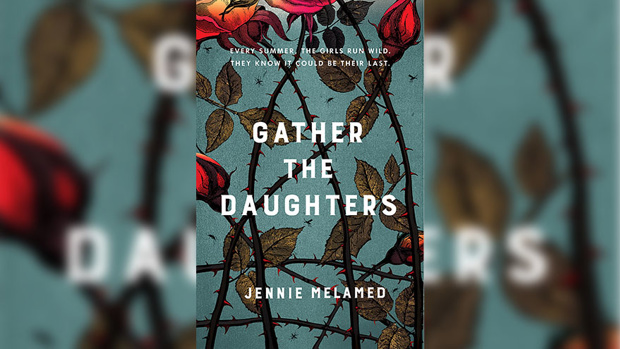Stephanie Jones Book Review - Gather The Daughters
- Publish Date
- Thursday, 3 August 2017, 11:27AM

- Author
- By Stephanie Jones
“I don’t,” said Janice, hiccupping, “think I want to be a woman.” “My goodness,
“My goodness, dear, said Mrs Solomon. “As if you had a choice.”
The thrill and terror of Jennie Melamed’s apocalyptic horror story Gather the Daughters lies both in what is shown and what is not. The nameless community of its setting is a closed one where female fertility is currency and girls are married off when they reach the “summer of fruition”.
They must reproduce, but no more than twice, and the rate of unsurvivable foetal abnormality – “defectives” in the people’s parlance – is discomfortingly high. The people know their limited gene pool, originating from the settlement of just 10 families, is to blame, and they will reluctantly admit the occasional new family from what they call the wastelands, the area beyond their borders about which rumours abound. For those who are no longer useful, suicide is encouraged.
Everyone in the community has been taught that their ancestors, the settlers, were chosen by God to start a new society. What is not clear to the reader is how long the community has existed, or what conditions persist outside it, and the latter knowledge is likewise hazy to the girls who are the novel’s narrative centre and its conscience.
The girls, captive as slaves, grow defiant at the denial of their self-determination and the pastor’s attempt to indoctrinate them as “dutiful daughters and dutiful wives”. The most rebellious is Janey Solomon, who starves herself to forestall the menstruation that will trigger her forced marriage, “absorb[ing] hunger into herself, riding the wave of white-hot pleading in her body until it fades to a glow that warms her blood.”
Janey will emerge as the novel’s heroine and truth-teller, and an instigator of the secret meetings of the girls, who assemble like early suffragettes to share information that will trace a pattern of femicide within the community. The girls are less explicit about sexual misconduct within their families – even in an exclusive society, they recognise that a great deal about how they live is shameful.
Melamed allows her reader time to adjust to this brilliantly imagined netherworld before revealing the full ghastliness to which the girls are subjected, an ordeal made heavier by the casualness with which the community’s women – themselves survivors, though it’s not a term they know – debate the ideal timing of initiation: “It’s best started before they’re old enough to really understand it. Then it’s just part of life.”
Many will not survive the events Melamed describes, and an unspecified sickness which lays waste to many residents triggers the violence and schism foreshadowed from the first page, when a girl dreams of herself as an adult, watching her daughters drown as her legs remain rooted to the ground, “paralyzed as dead stumps”.
This community could be anywhere, and I wondered whether Melamed had taken as inspiration the case of Pitcairn Island, another closed society in which warped patriarchy, masculine control and female sexual abuse were rife. In Gather the Daughters, Melamed’s chilling vision marks the psyche like a nuclear shadow.
To get in the draw to win one of five copies of Gather The Daughters click here.
Every week Stephanie reviews the Book of the Week.
As the Coast book reviewer, Stephanie Jones shares her thoughts each week on the latest releases.
Stephanie has a BA (Hons) in history and English literature, and a background in journalism, magazine publishing, public relations and corporate and consumer communications.
Stephanie is a contributor to the New Zealand Book Council’s ‘Talking Books’ podcast series (listen here), and a member of the 2016 Ngaio Marsh Award judging panel. She can be found on Twitter @ParsingThePage.

Take your Radio, Podcasts and Music with you

